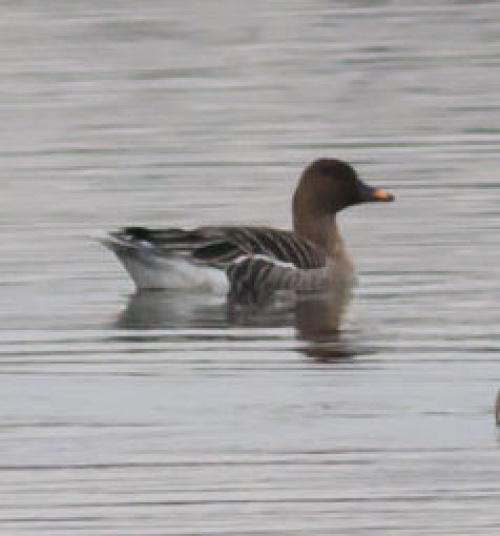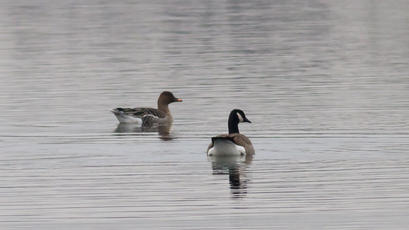Bean Goose - Anser fabalis
The Bean Goose is one of the 'grey geese' and tends to be darker and browner than the other species in this group, and to have a darker head and neck. A large goose with scaled brown upperparts, white underparts. The head and neck are dark brown. It has a black bill with a yellow-orange saddle. The tail is dark with white undertail coverts. Legs and feet are orange. Some ornithologists split the five sub species into two species based on breeding habitat, whether in forest bogs in the subarctic taiga, or on the arctic tundra.
They show a preference for pastures which have high proportions of perennial ryegrass. They are intolerant of disturbance and prefer feeding fields with no other grazing livestock during the winter months and choose open areas with unobstructed sight lines both for feeding and for roosting.
Between late September and March. There are two regular wintering flocks of Taiga Bean Goose - in the Yare Valley in Norfolk and the Avon Valley near Falkirk in southern Scotland. Smaller numbers of the smaller, shorter-billed Tundra Bean Goose also spend winter here, erratic in their appearances; they can be seen in the company of other grey geese at Slimbridge, Gloucestershire and Holkham Marshes, Norfolk.
Breeds in north Scandinavia, north Russia and north Asia, and visits Britain in small numbers in autumn and winter. Most of the birds that winter here come from Scandinavia, where the breeding population has declined in the last 20 years.
400 birds from the 'taiga' population and 300 from the 'tundra' winter here.
Very rare winter vagrant.
Leicestershire & Rutland Map
Enter a town or village to see local records
MAP KEY:
Yellow squares = NBN records (all known data)
Coloured circles = NatureSpot records: 2020+ | 2015-2019 | pre-2015
UK Map
Species profile
- Common names
- Bean Goose, Taiga/Tundra Bean Goose
- Species group:
- Birds
- Kingdom:
- Animalia
- Order:
- Anseriformes
- Family:
- Anatidae
- Records on NatureSpot:
- 2
- First record:
- 29/02/2012 (Baker, Rodney)
- Last record:
- 09/03/2013 (Nicholls, David)
Total records by month
% of records within its species group
10km squares with records
The latest images and records displayed below include those awaiting verification checks so we cannot guarantee that every identification is correct. Once accepted, the record displays a green tick.
In the Latest Records section, click on the header to sort A-Z, and again to sort Z-A. Use the header boxes to filter the list.



